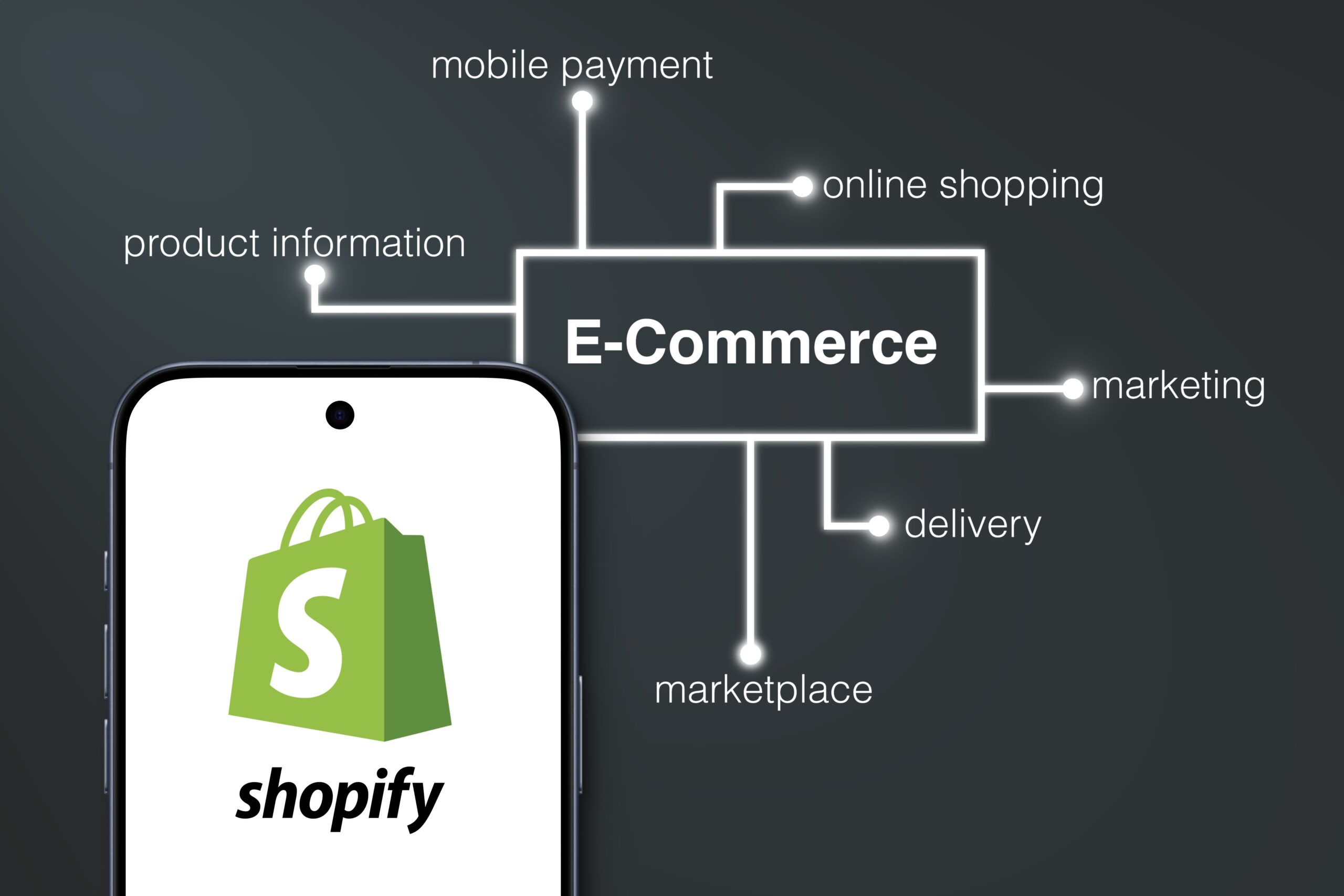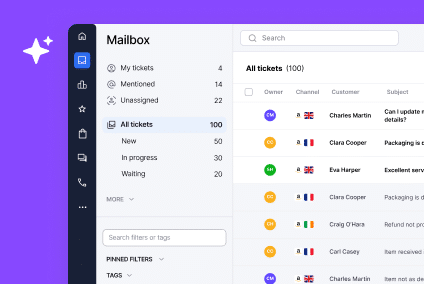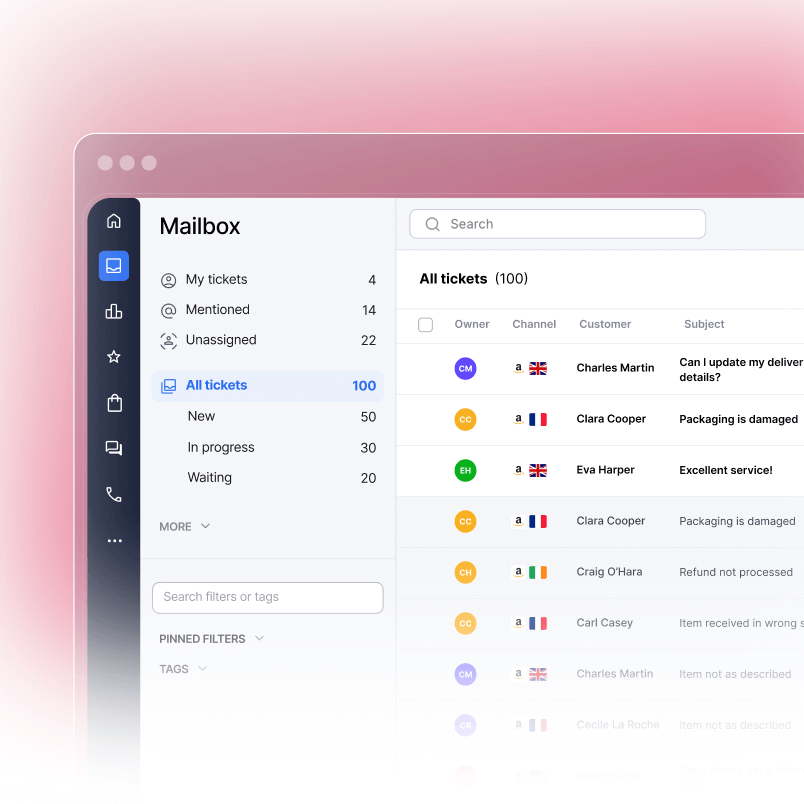What is Shopify AI, and how does it help sellers right now? In a nutshell, it automates ‘busywork’, predicts what customers need, and gives your team smart replies with the right order data. Put it to work and you get faster support, cleaner operations, and a checkout that converts.
This guide shows how Shopify AI connects to your day-to-day, where it saves the most time, and how to roll it out without adding chores.
What is Shopify AI and where does it fit today?
When people say Shopify AI, they usually mean the set of native features and integrations that help you write, route, and respond faster. Think automatic product copy, suggested replies in your inbox, and a connected help desk that pulls in orders and tracking so agents answer in context. That’s the “do more with the same team” upside.
Shopify AI works best when it sits inside your support hub and your storefront. The storefront side handles speed to checkout and merchandising. The support side handles routing, tone, and accuracy. Together, they lift conversion and keep post-purchase clean.
Shopify merchants generated a record $11.5B over Black Friday Cyber Monday sales period in 2024, according to Shopify data.
Which AI-powered Shopify tools actually move the needle?
Here’s what to pay attention to first.
Shopify Magic for content and replies
Use it to draft product descriptions, rewrite snippets, and speed up replies. It’s quick to adopt and easy to edit.
Sidekick for store operations
Sidekick is an AI assistant that helps you act on store data, with growing support across the admin. It’s built to answer questions, surface insights, and recommend actions.
Sidekick now supports 20 languages and adds deeper reasoning and voice chat, according to Shopify’s Summer ’25 Update.
Shopify Inbox with AI-suggested replies
For common questions, suggested replies help your team stay consistent and fast, then hand off to an agent for edge cases.
Shop Pay for conversion
Fast checkout matters. Shop Pay removes friction and reduces drop-off on mobile.
Shop Pay lifts mobile conversion by up to 1.91× compared to other accelerated checkouts, according to Shopify stats.
How do Shopify AI integrations connect support, ops, and marketing?
The most practical gains show up when your help desk and storefront share context. If you’re wondering “what is AI-first commerce?” think of it as AI taking the first pass on routine work while your team handles judgment and care. In that setup, a connected system pulls messages, orders, and tracking into one view, then uses Shopify AI to classify intent, suggest the next step, and draft a reply with the key details. Your agent reviews, personalizes, and sends. No tab hopping. No copy and paste.
That same loop supports marketing. When campaigns hit and questions spike, smart routing splits “where’s my order” from presales so specialists see the right threads. Templates keep policy and tone consistent. Predictive signals flag issues before they become cases. This is where Shopify eCommerce automation earns its keep.
When you want to bring everything together, connect your store through a Shopify AI-powered integration so order context sits beside every conversation and the same rules apply across channels.
What does AI-first commerce look like in practice?
Think of AI-first commerce in Shopify as a store and support stack that assumes AI helps first, then humans step in for judgment. Rather than being about replacing people, it’s about letting the system handle routine analysis and drafting while your team focuses on decisions and care.
If you want a deeper primer to share with your team, point them to a guide that explains AI-first commerce in plain language. Use it to align on what AI does and what humans keep.
AI-first works when you set clear guardrails. Give the model the facts it needs, pick the moments where speed beats perfect phrasing, and add review steps where tone or policy matters most.
Real use cases you can run this week
Here are practical plays that use Shopify AI integrations, AI-powered Shopify tools, and a help desk with order context.
1) “Where’s my order” without the scramble
- Auto-tag messages that mention tracking or delivery.
- Pull live carrier status and an ETA into the first reply.
- If scans stall, send a proactive update before the buyer asks again.
- Use sentiment detection to bump frustrated tones to the top.
This is classic Shopify AI support. Agents stay in control, but the system fills the blanks and keeps the clock on your side.
2) Returns that don’t drag
- Detect common reasons and insert the right label or steps automatically.
- Suppress review requests when a return is open.
- Send a check-in after resolution to confirm the fix or offer a make-right.
A little Shopify smart support goes far here. You reduce back-and-forth and keep feedback positive.
3) Presales that raise AOV
- Route compatibility and sizing questions to a product specialist.
- Suggest bundles or alternatives from a curated list.
- Save the strongest replies as snippets so everyone can use them.
This is where AI-powered Shopify tools help sales without adding pressure on the team.
4) Predictive signals that prevent cases
- Watch for low inventory on fast movers and prompt a restock task.
- Flag repeat contacts on a single order and escalate to a senior agent.
- Track SKUs that trigger “not as described” and surface a PDP fix.
These are simple entries into Shopify predictive commerce. You move first and avoid defects.
5) After-hours coverage that feels human
- Send a polite acknowledgement with a promised response window.
- Gather any missing details with a short form.
- Hand off to the right owner when the team is back online.
It’s small, but it protects response time and keeps expectations clear.
How to roll this out without adding chores
We always recommend you keep it light: prove the value fast, then scale. Here’s how.
Start with data you already have
Orders, tracking, and conversation history are enough to power strong AI Shopify workflows. You don’t need a full rebuild to begin.
Pick three automations and five templates
Cover WISMO, returns, and presales with one rule and one template each. Add two more templates for delivery follow-up and partial refund options.
Put a human in the loop where it matters
Let the system draft, then have agents approve anything that affects refunds, policy, or tone.
Measure what the business cares about
Track first response time, resolution time, and the share of tickets closed in one reply. Tie those to conversion and repeat purchase.
When you’re ready to connect the dots, map your AI Shopify workflows so routing, timers, and templates work the same way across channels.
What sellers are seeing
Here’s what we hear most from teams using AI on Shopify. You see faster first replies, so repeat contacts drop. Handoffs feel smoother because order context is right there. Your brand voice stays steady without a heavy playbook. And you get time back for the fun stuff like bundles, testing offers, and quick PDP tweaks.
When you add it up, the time saved, happier customers, and steadier conversion make the shift clearly worth it.
A quick recap and your next moves
Remember this:
- Shopify AI works best when your help desk and storefront share context.
- Native features like Shopify Magic, Inbox suggestions, and Shop Pay add up to real wins.
- Shopify AI integrations connect support, ops, and marketing so campaigns don’t overwhelm the team.
- Predictive signals and simple rules prevent cases and protect ratings.
Do this next:
- Connect your store through eDesk’s Shopify AI-powered integration so messages and orders live in one queue with order context.
Build five templates with variables: order confirmation, shipping update with tracking, delivery follow-up, return instructions, and partial refund options. - Turn on three basics: after-hours acknowledgments, intent-based routing for WISMO and returns, and timers that alert before SLAs are at risk.
- Align your team on what AI-first commerce means for your workflows, then expand to returns and presales once the basics are stable.
- Map your AI Shopify workflows across channels so the same rules and reports apply as you grow.
Want to see this in your queue with real orders and real templates? Book a Demo and we’ll walk through the setup, the automations that save the most time, and how to prove the ROI in a week.
FAQs
What is AI-first commerce?
It’s a way of running your store where AI handles routine drafting, routing, and analysis first, and humans step in for judgment, care, and edge cases. You get speed and consistency without losing control.
How does Shopify AI improve automation?
It classifies intent, drafts replies with order context, and flags risk based on signals like stalled scans or repeat contacts. Your team approves the message and moves on. Handle time drops and accuracy improves.
Which AI-powered Shopify tools should I try first?
Start with Shopify Magic for product copy and suggested replies, then enable Shop Pay for conversion. If your team handles a lot of chat or email, bring AI into Inbox and your help desk so messages move with order data.
Do I need developers to set this up?
Not for the basics. You can turn on templates with variables, simple routing, and timers without code. As you scale, consider lightweight scripting or app-level automations for edge cases.
Can this scale across marketplaces?
Yes. The same routing and templates can work across channels when your help desk centralizes messages and orders. You get consistent answers and one set of reports.




